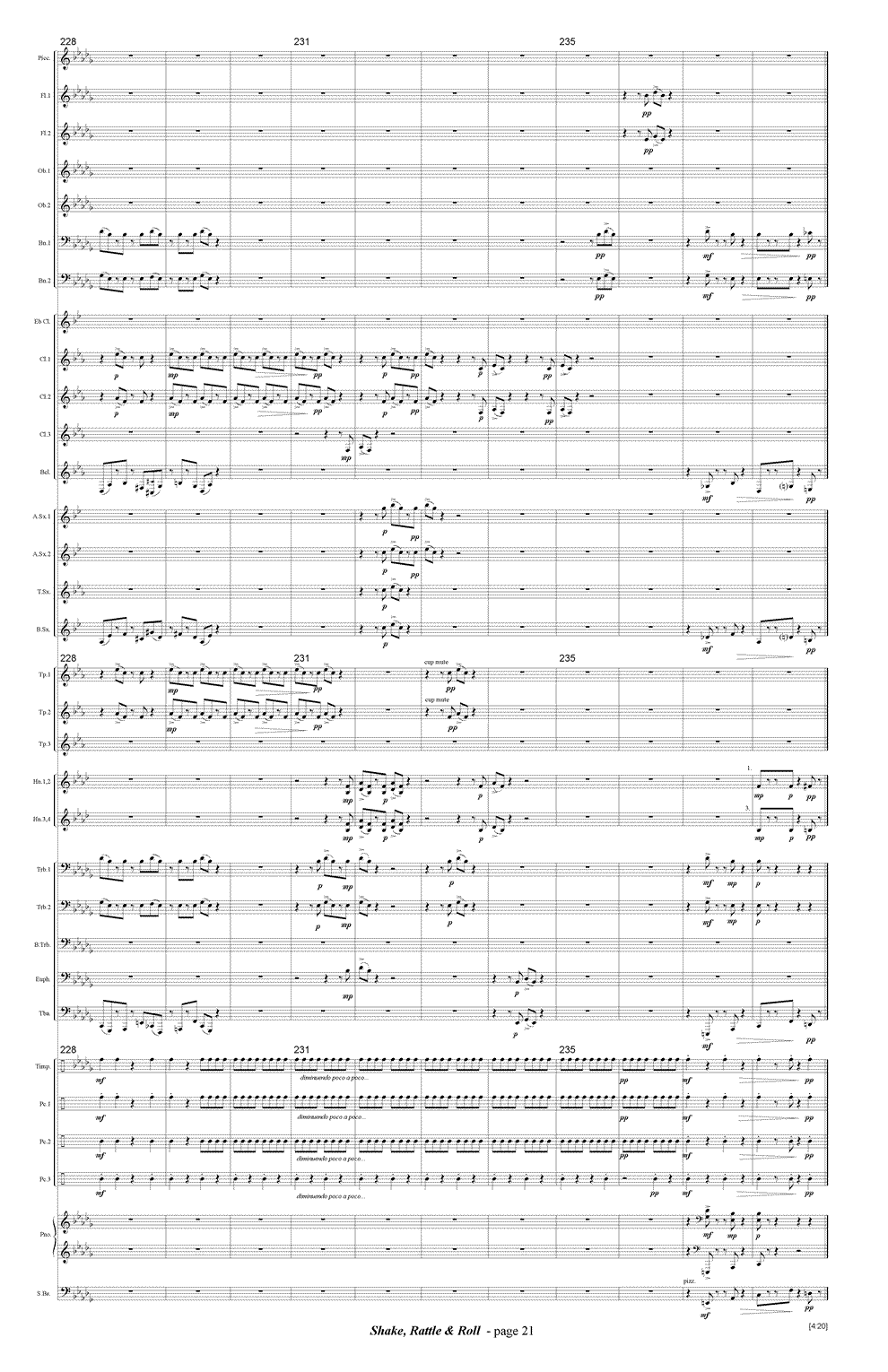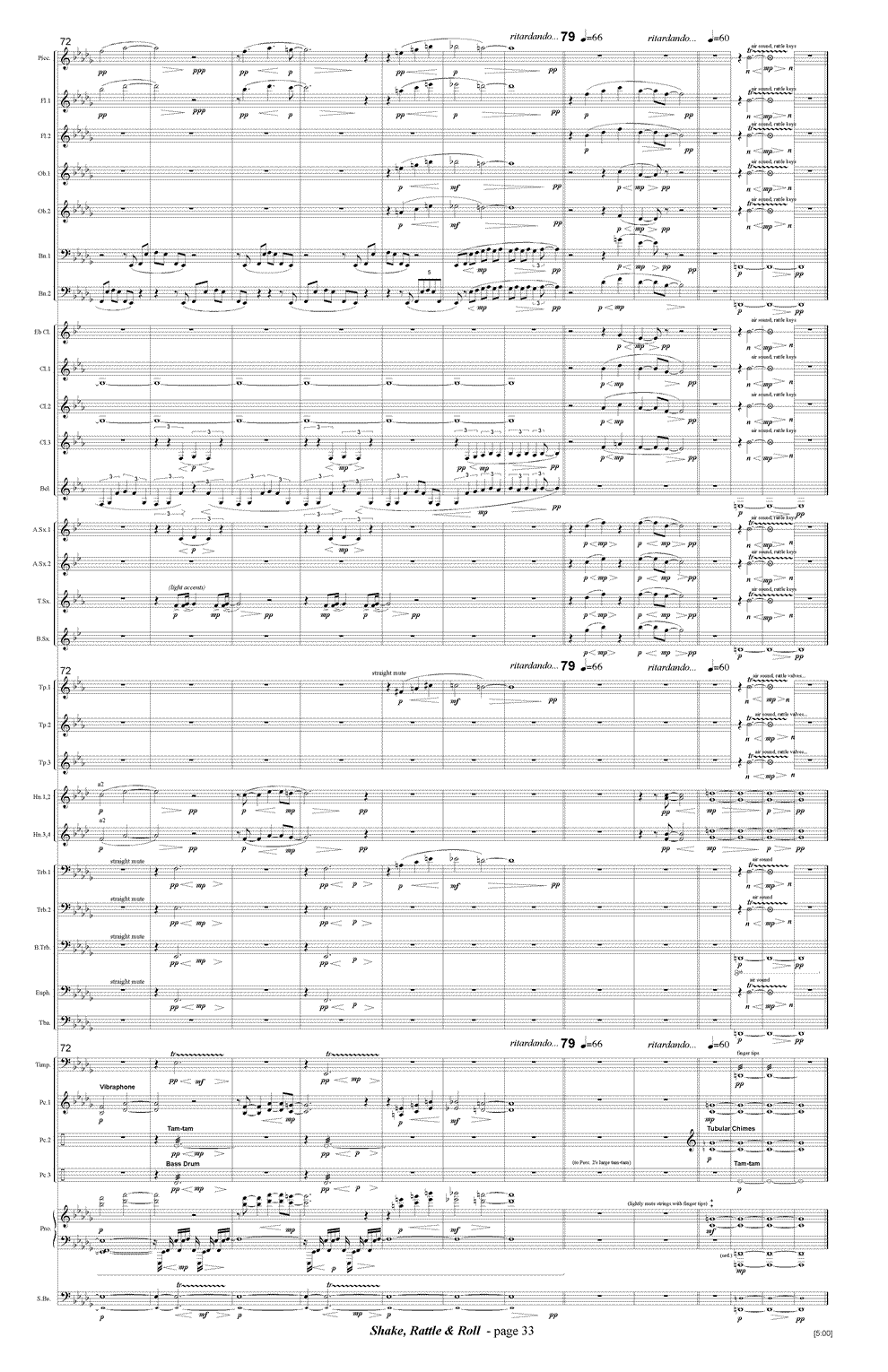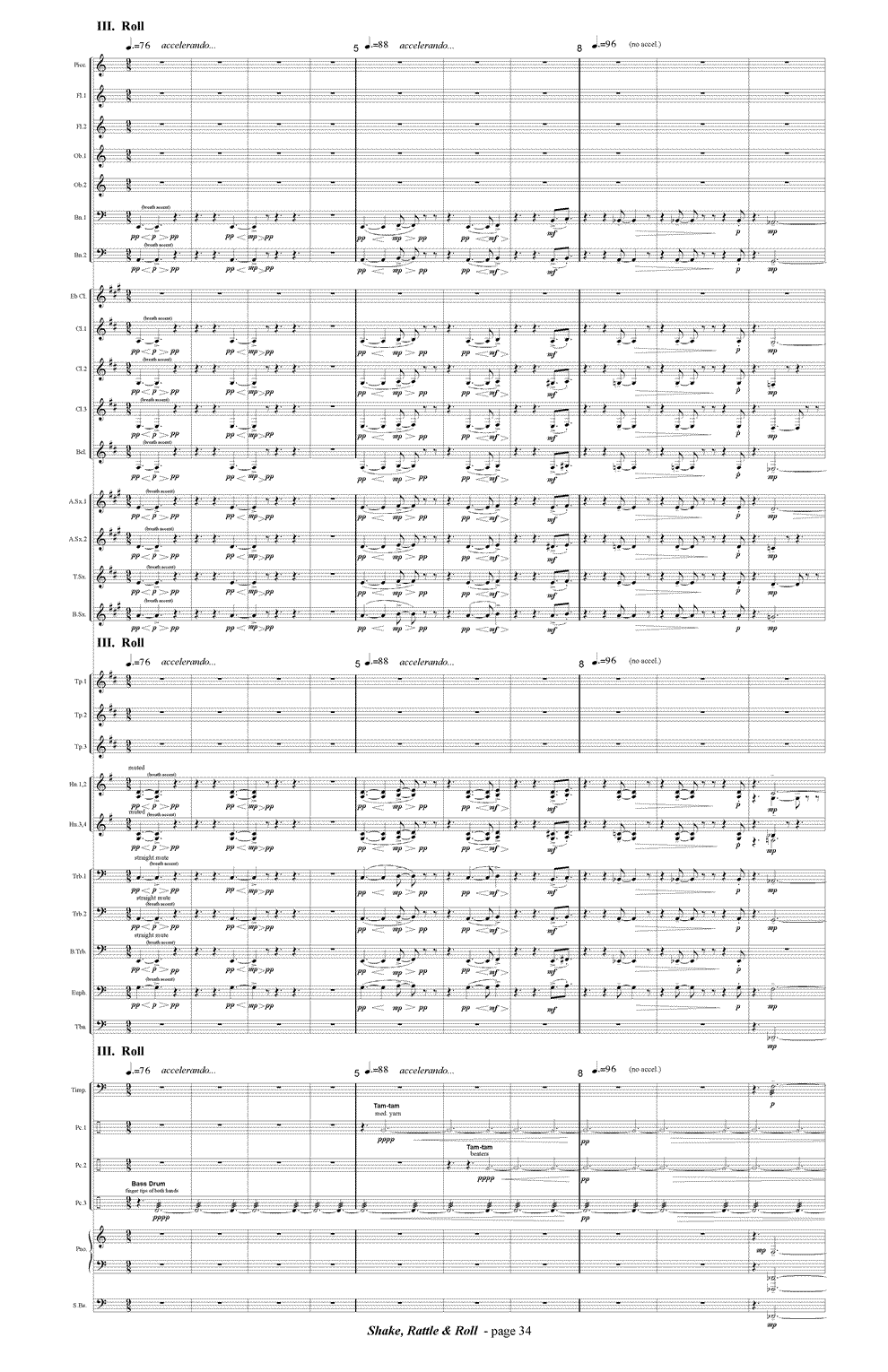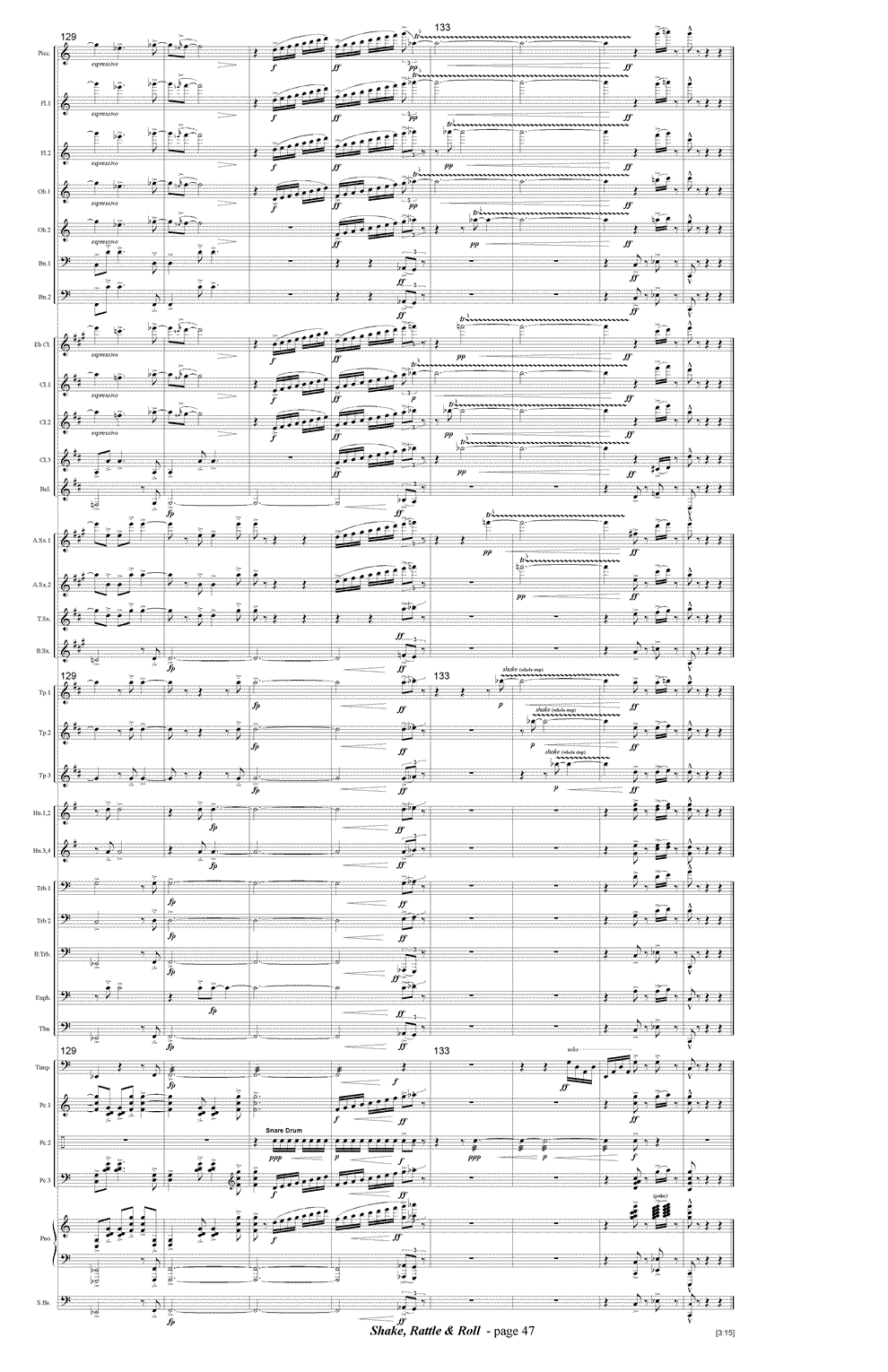Shake, Rattle & Roll
(2004) for wind ensemble
- Shake
- Rattle
- Roll
instrumentation: Piccolo (=Fl.3), Flute 1,2, Oboe 1,2, Bassoon 1,2, Eb Clarinet, Bb Clarinet 1,2,3, Bb Bass Clarinet, Alto Saxophone 1,2, Tenor Saxophone, Baritone Saxophone, Bb Trumpet 1,2,3, Horn 1,2,3,4 , Trombone 1,2, Bass Trombone, Euphonium, Tuba, Timpani, Percussion 1,2,3, Piano, String Bass (opt)
duration: 14 minutes (4:20 / 5:00 / 3:15)
grade level: 5
premieres: March 12, 2005 by the Metropolitan Wind Symphony, Lawrence Isaacson, Music Director
live performance audio:
I Shake
II Rattle
III Roll
Sandefjord Musikkorps & Thomas Rimul
Perusal Score
Program Note
Around the holidays each year while I was growing up, my father would get out some old boxes of music saved from his time playing tenor saxophone in an Army dance band in Colorado. Our gang made for a rather motley ensemble, with an assortment of instruments that didn’t quite make up a full dance band, but we had fun. One of the charts dad had an arrangement of was the Big Joe Turner hit, “Shake, Rattle and Roll” - written by Charles Calhoun. I decided to use this title while composing the first movement, which has a lot of ‘shaking’ in it, but apart from the shared title this composition for wind ensemble has little in common with that classic tune. Well, there is a hint of the tune’s characteristic rhythm in the first movement, which also has a bit of a jazz feel to it, but that’s about it. Those three powerful words just struck me as being a good outline for a three movement composition, so I ran with the idea.
Performance Notes:
I. Shake
Eighths should be slightly swung, in a quasi be-bop style. That is, the ‘swing’ has more to do with feel than with actually altering the rhythm. Rhythmically, the eighths should be closer to straight eighths than triplets.
Two eighths in a row should be played ‘long-short.’ Single eighths are short. Three eighths in a row should be played ‘long-long-short.’ In other words, the last eighth should always be short. Further, the articulation should generally be more ’dah’ than ‘tah.’
II. Rattle
Trill indications should be followed closely. Trills should always go to the note name above, and follow any given accidentals. For example, a trill on Eb with a natural means trill to F, not to E natural. Standard usage, but I state it here to be clear. One exception is that ALL trills from m. 54-61 are to be ½ step trills.
At measure 63, many of the woodwinds are ‘turned loose’ on ad lib scales, which should nevertheless stay within the given key signature of Db major (Eb Dorian). They may follow the given lines, but an exact realization of those lines is not necessary. They DO need to rejoin the conductor with the descending scales at measure 66-67.
The final ‘rattle’ in the movement has many players making an air sound through their instrument, being careful NOT to produce any normal pitched sound – just air and the keys rattling.
III. Roll
Starting at measure 89, the brass should be careful not to sustain an unrelenting sound, so that the lines may be heard clearly.
ALSO: Roll may be played alone as a fanfare.







